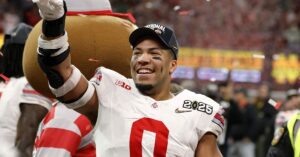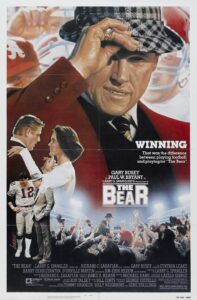
Uncommon Consistency Among the Greatest Coaches in Clemson Tigers History
The Clemson Tigers, a storied athletic program nestled in the hills of South Carolina, have cultivated a legacy of excellence not only through championship banners and All-American athletes, but more importantly through the uncommon consistency of their greatest coaches. While wins and titles are the surface-level measure of success, a deeper examination reveals a unique thread that runs through Clemson’s most iconic coaching figures. These individuals—men like Frank Howard, Dabo Swinney, Bill Wilhelm, and Jack Leggett—exhibited rare, steady characteristics that transcended eras, sports, and even styles of play. This essay explores five consistent yet uncommon qualities that define Clemson’s elite coaching lineage: long-term program building, culture-fit recruiting, balanced innovation, commitment to staff development, and a family-oriented atmosphere.
In an era where impatience often governs decision-making, Clemson’s greatest coaches have been characterized by their willingness to build slowly, deliberately, and authentically. They weren’t chasing short-term wins at the expense of long-term stability.
Frank Howard, who coached Clemson football from 1940 to 1969, is perhaps the earliest example. Known as a larger-than-life personality, Howard prioritized building a tough, disciplined football culture. His emphasis on work ethic and resilience laid the foundation for Clemson’s football tradition. Despite several average seasons, Clemson retained Howard because his leadership extended beyond the scoreboard—he was shaping young men and setting institutional standards.
Fast forward to Dabo Swinney, who took over as interim head coach in 2008 and wasn’t initially seen as a top-tier candidate. Swinney didn’t produce immediate championships, but athletic director Terry Don Phillips believed in his vision. Swinney slowly transformed the program through an investment in facilities, culture, and staff—resulting in two national titles and multiple playoff appearances.
This long-view approach is echoed in Bill Wilhelm, Clemson’s baseball coach from 1958 to 1993. Wilhelm gradually built the Tigers into a national baseball power, earning 17 NCAA Tournament appearances and setting the standard for future success. Unlike many modern coaches, Wilhelm’s method was rooted in process, patience, and program stability.
Another thread running through Clemson’s top coaches is an uncommon emphasis on recruiting players who fit the culture, rather than solely chasing athletic stardom. This philosophy has helped the Tigers avoid many of the chemistry and discipline issues that plague talent-first programs.
Swinney epitomizes this approach. He has famously turned away high-ranked recruits if they didn’t align with the team’s culture of humility, faith, and team-first mentality. His recruiting philosophy is centered on building men, not just players. The goal is to find high-character individuals who buy into the vision of “Clemson Family” and will grow over time within that structure.
This approach is not unique to football. Coaches like Jack Leggett, Wilhelm’s successor in baseball, also prioritized team chemistry and maturity over hype. Leggett inherited a winning program and kept it nationally relevant by maintaining high character standards in recruiting.
While many programs fall victim to short-term talent grabs, Clemson’s coaches have consistently recruited for longevity and leadership—an approach that pays dividends in postseason play and locker room harmony.
One of the most difficult balancing acts in coaching is maintaining a strong identity while adapting to the evolving demands of competition. Clemson’s elite coaches have shown a rare consistency in achieving this balance.
Under Swinney’s leadership, Clemson football has remained grounded in traditional values—discipline, teamwork, and preparation—while also becoming a leader in offensive and defensive innovation. Early on, he brought in Chad Morris to implement a high-speed spread offense, a move that revolutionized Clemson’s offensive identity. Later, he promoted Brent Venables, who built a fearsome and complex defense. Swinney never strayed from the program’s core values even while embracing change on the tactical level.
Frank Howard, although far from the era of no-huddle offenses and analytics, showed similar balance. He held onto old-school football values, but was not averse to strategic change when needed. His teams were well-prepared, flexible, and tough-minded—hallmarks of lasting success.
In baseball, Wilhelm was one of the first coaches to fully utilize pitching depth and defensive shifts, adapting to the modernizing game while remaining a purist at heart. The same could be said for Jack Leggett, who was known for aggressive baserunning and strategic nuance without losing the fundamental principles of the game.
This ability to adapt tactically without compromising cultural or ethical foundations is a rare, consistent trait among Clemson’s top coaches.





